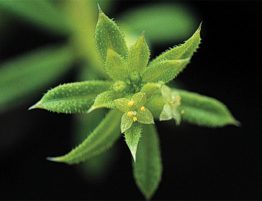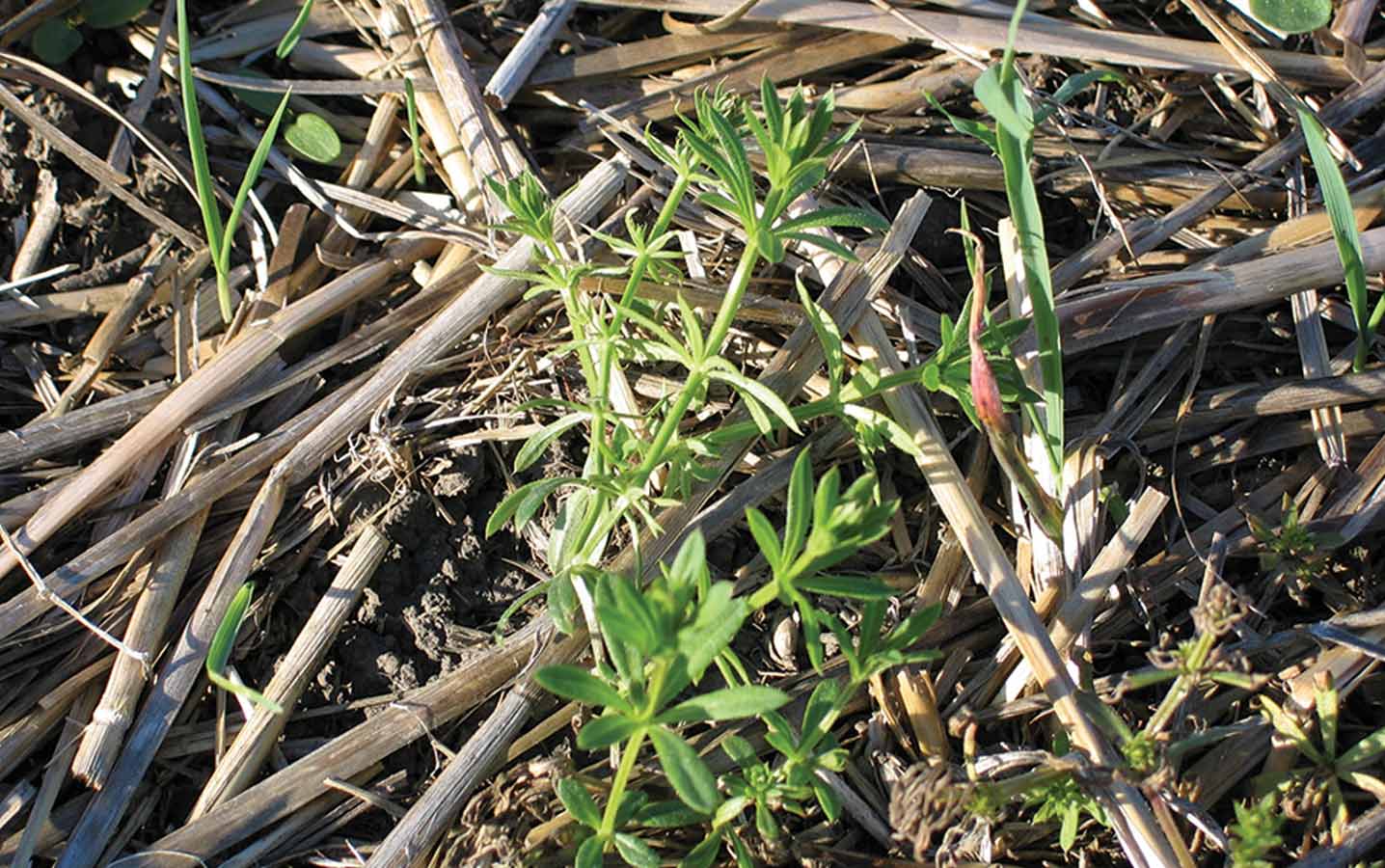Herbicides that could improve cleavers control
Key result: In Western Canada, field surveys show an increased presence of cleavers. This two-year study showed that clomazone and quinclorac herbicides significantly reduced both cleaver biomass and seed contamination, and improved cleavers control in canola.
Project title, Principal investigator: “Emergence timing and management of cleavers in Saskatchewan canola crops,” Christian Willenborg, University of Saskatchewan
Funding: SaskCanola, Saskatchewan Ministry of Agriculture, GF2
Find Willenborg’s report in the Research section at saskcanola.com
In Western Canada, it has been believed that galium (cleavers) populations consisted of two species, G. aparine and G. spurium. These species are difficult to control and can cause downgrading and reduce crop quality. Proper identification and improved control can lead to better management practices for cleavers in canola.
Willenborg led this two-year study to determine the emergence and morphological characteristics of cleavers populations in Western Canada and to assess which species are present. A third objective was to characterize their response to both new herbicides, such as quinclorac and clomazone, and to common canola herbicides such as glufosinate-ammonium and glyphosate.
Field experiments were conducted in 2013 and 2014 at the Scott Research Farm and the Saskatchewan Pulse Growers research site (SPG) near Saskatoon. An additional site was added at Rosthern in 2014. Herbicide efficacy on cleavers was evaluated using eight treatments in which the herbicide standard for each canola system was used alone and with the addition of quinclorac and/or clomazone. At all sites, canola varieties resistant to their respective herbicide system were seeded into cereal stubble. Cleavers were seeded to target a plant stand of 75-100 plants/m2. Greenhouse dose-response experiments were also conducted to assess variability between populations in their herbicide response.
Results of the field trials consistently showed that tank-mixing quinclorac with any of the herbicide standards improved cleavers control in canola. Applying clomazone prior to seeding canola followed by an in-crop application of a herbicide standard also provided acceptable control. Clomazone and quinclorac significantly reduced both cleavers biomass and seed contamination.
Cleavers resistance to Group-2 herbicides is already noted throughout Alberta and Saskatchewan, and cleavers rank second among weeds likely to develop glyphosate resistance in the Black Soil Zone. Better control of cleavers is key for resistance management as smaller population size means weeds are less likely to have resistant individuals present.
Willenborg and his team also developed molecular analyses to characterize the genetic differences among cleavers populations, and have identified a molecular marker that can be used to differentiate between galium species. All samples processed from across western Canada were Galium spurium L., or false cleavers, which suggests either G. aparine is not present in western Canada, or it was not present in the samples used in the study.
Molecular analysis showed that the galium populations generally exhibited little variation in morphological traits, with the exception of ermergence timing and start and end of the flowering period. Emergence timing was significantly different between years with all of the populations exhibiting emergence in both spring and fall.
These differences suggest growers will need to pay close attention to emergence timing of this weed to ensure the small window for control is not missed. As a significant proportion of cleaver populations emerged in the fall, and with those that over-winter being very difficult to control in the spring, Willenborg reports that fall management is key to the sustainable long-term control of cleavers in Western Canada.





